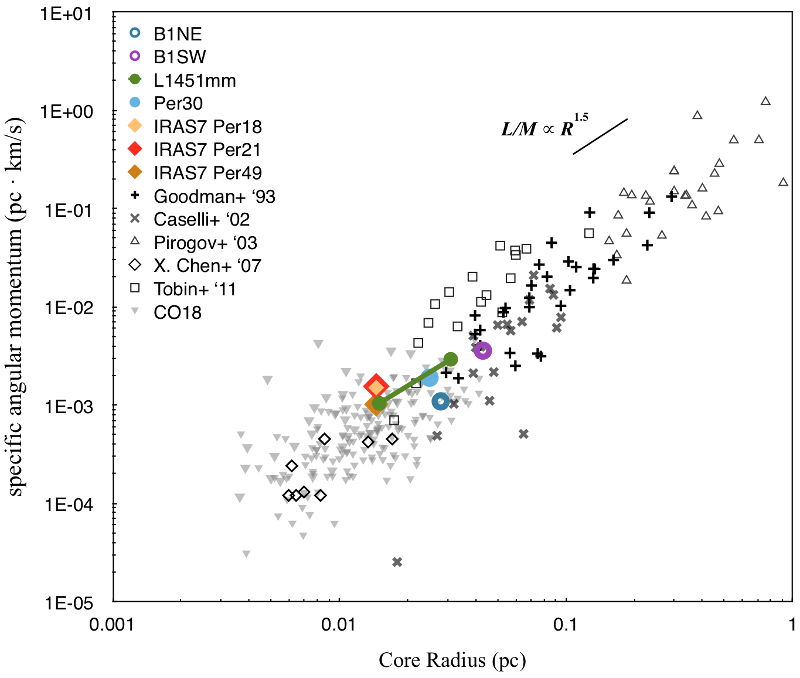| EPoS Contribution |
|
Investigating the Complex Velocity Structures within Dense Cores
Che-Yu Chen UVA, Charlottesville, VA, US | |
| Within dense cores, infall and rotation are both important in shaping the protostellar evolution. Utilizing the more than 100 gravitationally bound dense cores formed in our turbulent MHD simulations, we analyzed the kinematic properties of dense cores, and found disagreement between our statistical results and the classical theory of star formation. Specifically, our result suggests that dense cores likely acquire angular momenta from ambient velocity perturbations, because the mean magnetic field is generally misaligned with core-scale rotation, and the core's specific angular momentum follows the observed relationship L/M ∝ R3/2 over a huge range of spatial scales. Furthermore, with typical rotational/kinetic energy ratio ~ 0.1, rotation is not likely the dominant motion when cores collapse. This indicates that high velocity and angular resolution are both crucial to observationally detect a signature of rotation or infall within dense cores. In our recent high-spectral resolution N2H+ observations toward 5 dense cores in Perseus using GBT-Argus, though the fitted centroid velocity fields may show clear gradients that can be interpreted as rotation, we found intriguing kinematic features in the PV space, which suggest turbulence could be playing a critical role in shaping the velocity field within collapsing cores. Our ongoing project, Dynamics in Star-forming Cores: a GBT-Argus Survey (DiSCo GAS), will survey all dense cores within Perseus and allow us to establish a statistical sample of core/envelope velocity structure. | |
 | |
| Caption:
The specific angular momentum-radius correlation measured in both
previous observations and our simulations (black/grey symbols), as well
as the results of individual targets derived from our GBT-Argus
observations (colored symbols). The specific angular momentum appears to
roughly follow a power law of core size, L/M ∝ R | |
| Collaborators: Z.-Y. Li, UVA, US E. Ostriker, Princeton, US The DiSCo GAS team |
Key publication
Suggested Session: Cores |

